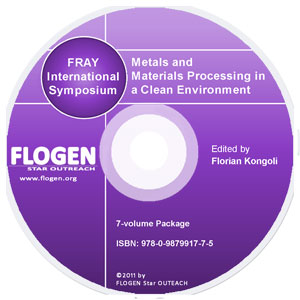
CD shopping page |
2011-Sustainable Industrial Processing Summit
|
| Editors: | Florian K |
| Publisher: | Flogen Star OUTREACH |
| Publication Year: | 2012 |
| Pages: | 708 pages |
| ISBN: | 978-0-9879917-1-3 |
| ISSN: | 2291-1227 (Metals and Materials Processing in a Clean Environment Series) |
Sustainability In Ironmaking Processes
S. Komar Kawatra1;1ADVANCED SUSTAINABLE IRON AND STEELMAKING CENTER, Houghton, United States;
Type of Paper: Invite
Id Paper: 489
Topic: 5
Abstract:
Fully sustainable iron production will require the industry to reach the level of “zero wasteâ€, which will ensure that any plausible future environmental regulations will be met. the basis of zero waste is that all of the inputs to ironmaking should be minimized by conservation and re-use within the process. Further, any material leaving the process should ultimately become marketable products of one sort or another. This will require attention in three areas: (1) Air emissions; (2) Water effluents; and (3) Solid wastes. For air emissions, a concern is the release of airborne particulates (dust) when pellets are produced and handled during stockpiling and loading/unloading operations. Airborne particulates finer than 2.5 micrometers are a particular health hazard due to their ability to embed in lung tissue. Effective dust suppressants not only prevent dust emissions, but also ensure that more material remains in the marketable product. For water effluents, most of the water requirement is in the iron ore concentration processes. With extensive use of water recirculation, the amount of water that must be returned to the environment can be minimized. The ideal situation will be complete recirculation of all water, eliminating effluents completely. Regarding solids wastes, the conventional routes for making iron and steel require that the ore be upgraded through a series of physical separation processes in sequence. The unit operations involved include crushing, grinding, separation, dewatering, pelletization, blast furnace processing, and basic oxygen furnace processing. This complex sequence is not only restricted to ores that are coarse-grained enough to be processed, but also generates large volumes of unmarketable mineral tailings. Exploitation of these iron minerals can be carried out using a more direct smelting process ,with fewer process steps than are required for conventional ironmaking. This also has the potential for producing additional marketable slag by-products rather than waste tailings.